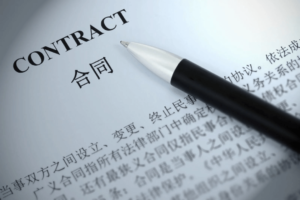The Paris Convention for the Protection of Industrial Property, also known as the Paris Convention, is an international treaty that was first signed in 1883. The convention was established with the purpose of harmonizing and protecting industrial property rights across different countries. Industrial property refers to patents, trademarks, industrial designs, and geographical indications.
In today’s global economy, industrial property protection plays a crucial role in fostering innovation, promoting economic growth, and attracting investment. The Paris Convention provides a framework for countries to cooperate and establish common standards for the protection of industrial property rights. By adhering to the provisions of the convention, countries can ensure that inventors and businesses are granted equal treatment and recognition for their intellectual property rights.
Table of Contents
ToggleKey Takeaways
- The Paris Convention for the Protection of Industrial Property is an international treaty that aims to protect intellectual property rights.
- Key provisions of the Paris Convention include national treatment, priority rights, and the establishment of the International Bureau of Intellectual Property.
- Leveraging the Paris Convention can provide benefits such as simplified application procedures and increased protection for industrial property.
- The World Intellectual Property Organization (WIPO) plays a crucial role in implementing the Paris Convention and promoting international cooperation in industrial property protection.
- National treatment is a key principle of the Paris Convention, which ensures that foreign nationals are treated the same as domestic nationals in terms of intellectual property protection.
Understanding the Key Provisions of the Paris Convention
The Paris Convention consists of several key provisions that govern the protection of industrial property rights. One of the most important provisions is the principle of national treatment, which ensures that foreign applicants are granted the same rights and privileges as domestic applicants in each member country. This means that inventors and businesses from one member country can enjoy the same level of protection and benefits as those from another member country.
Another key provision of the convention is priority rights. Under this provision, an applicant who has filed an application for a patent or trademark in one member country has a certain period of time to file an application in another member country and claim priority based on the earlier filing date. This allows inventors and businesses to secure their rights in multiple countries without having to go through separate application processes.
Benefits of Leveraging the Paris Convention for Industrial Property Protection
Leveraging the Paris Convention for industrial property protection offers numerous benefits for businesses and inventors. Firstly, it provides increased protection for their intellectual property rights. By adhering to the provisions of the convention, inventors and businesses can ensure that their patents, trademarks, and industrial designs are recognized and protected in multiple countries. This not only safeguards their investments but also allows them to expand their markets and reach a wider audience.
Furthermore, the Paris Convention enhances the international recognition of intellectual property rights. By adhering to the principles of national treatment and priority rights, member countries demonstrate their commitment to protecting and respecting the intellectual property rights of inventors and businesses. This creates a favorable environment for innovation and encourages the exchange of ideas and technologies between countries.
The Role of WIPO in Implementing the Paris Convention
The World Intellectual Property Organization (WIPO) plays a crucial role in implementing and enforcing the provisions of the Paris Convention. WIPO is a specialized agency of the United Nations that is responsible for promoting the protection of intellectual property rights worldwide. It provides a range of services and resources to help member countries implement and enforce the provisions of the convention.
WIPO’s services include the administration of international registration systems for patents, trademarks, and industrial designs. These systems allow inventors and businesses to obtain protection for their intellectual property rights in multiple countries through a single application process. WIPO also provides training programs, capacity-building initiatives, and technical assistance to help member countries develop effective intellectual property systems.
National Treatment and the Paris Convention: What You Need to Know
National treatment is a fundamental principle of the Paris Convention that ensures equal treatment for foreign applicants in each member country. Under this principle, inventors and businesses from one member country must be granted the same rights and privileges as domestic applicants in another member country. This means that they should not be discriminated against based on their nationality or country of origin.
National treatment is important because it promotes fairness and equality in the protection of industrial property rights. It ensures that inventors and businesses are not disadvantaged when seeking protection for their intellectual property rights in foreign markets. By adhering to the principle of national treatment, member countries create a level playing field for all applicants and encourage cross-border collaboration and innovation.
How the Paris Convention Promotes International Cooperation in Industrial Property Protection

The Paris Convention plays a crucial role in promoting international cooperation in the protection of industrial property rights. By establishing common standards and principles, the convention encourages member countries to work together and share best practices for the protection and enforcement of intellectual property rights.
One example of successful international cooperation under the Paris Convention is the Patent Cooperation Treaty (PCT). The PCT is an international treaty administered by WIPO that allows inventors and businesses to seek patent protection in multiple countries through a single application process. By adhering to the provisions of the PCT, member countries can streamline their patent application procedures and reduce administrative burdens for applicants.
Paris Convention and the Protection of Trademarks: A Comprehensive Guide
The Paris Convention provides comprehensive protection for trademarks, which are distinctive signs used to identify goods or services. Under the convention, member countries are required to provide adequate protection for trademarks and prevent their unauthorized use by third parties.
To ensure effective trademark protection, businesses should consider registering their trademarks in each country where they plan to do business. The convention provides a mechanism for claiming priority based on an earlier trademark application, allowing businesses to secure their rights in multiple countries without having to go through separate application processes.
The Paris Convention and the Protection of Patents: Best Practices
The Paris Convention also provides comprehensive protection for patents, which are exclusive rights granted to inventors for their inventions. Under the convention, member countries are required to provide patent protection for inventions that are new, involve an inventive step, and are capable of industrial application.
To ensure effective patent protection, inventors should consider filing patent applications in each country where they wish to obtain protection. The convention provides a mechanism for claiming priority based on an earlier patent application, allowing inventors to secure their rights in multiple countries without having to go through separate application processes.
Paris Convention and the Protection of Industrial Designs: A Practical Approach
The Paris Convention also provides protection for industrial designs, which are the aesthetic aspects of a product. Industrial designs can include the shape, configuration, pattern, or ornamentation of a product.
To ensure effective protection for industrial designs, businesses should consider registering their designs in each country where they plan to market their products. The convention provides a mechanism for claiming priority based on an earlier design application, allowing businesses to secure their rights in multiple countries without having to go through separate application processes.
Leveraging the Paris Convention for Industrial Property Protection in the 21st Century
In conclusion, the Paris Convention for the Protection of Industrial Property is a crucial international treaty that promotes the protection and recognition of industrial property rights. By adhering to the provisions of the convention, businesses and inventors can ensure that their patents, trademarks, and industrial designs are protected in multiple countries.
In today’s global economy, where innovation and intellectual property play a vital role in driving economic growth and competitiveness, leveraging the Paris Convention is essential. Businesses and inventors should take advantage of the convention’s provisions, such as national treatment and priority rights, to secure their intellectual property rights and expand their markets.
Furthermore, WIPO plays a crucial role in implementing and enforcing the provisions of the Paris Convention. WIPO’s services and resources can help businesses and inventors navigate the complexities of intellectual property protection and ensure that their rights are recognized and respected worldwide.
In conclusion, the Paris Convention is a powerful tool for businesses and inventors seeking to protect their intellectual property rights in today’s global economy. By leveraging the provisions of the convention and working together with WIPO and member countries, businesses and inventors can secure their rights, foster innovation, and contribute to economic growth.
If you’re interested in leveraging the Paris Convention for the protection of industrial property, you may also find this article on “Understanding Design Patent Applications and Requirements in China” helpful. It provides valuable insights into the process of filing design patent applications in China and the specific requirements that need to be met. Understanding these nuances can greatly enhance your ability to protect your intellectual property in the Chinese market. Check out the article here.








